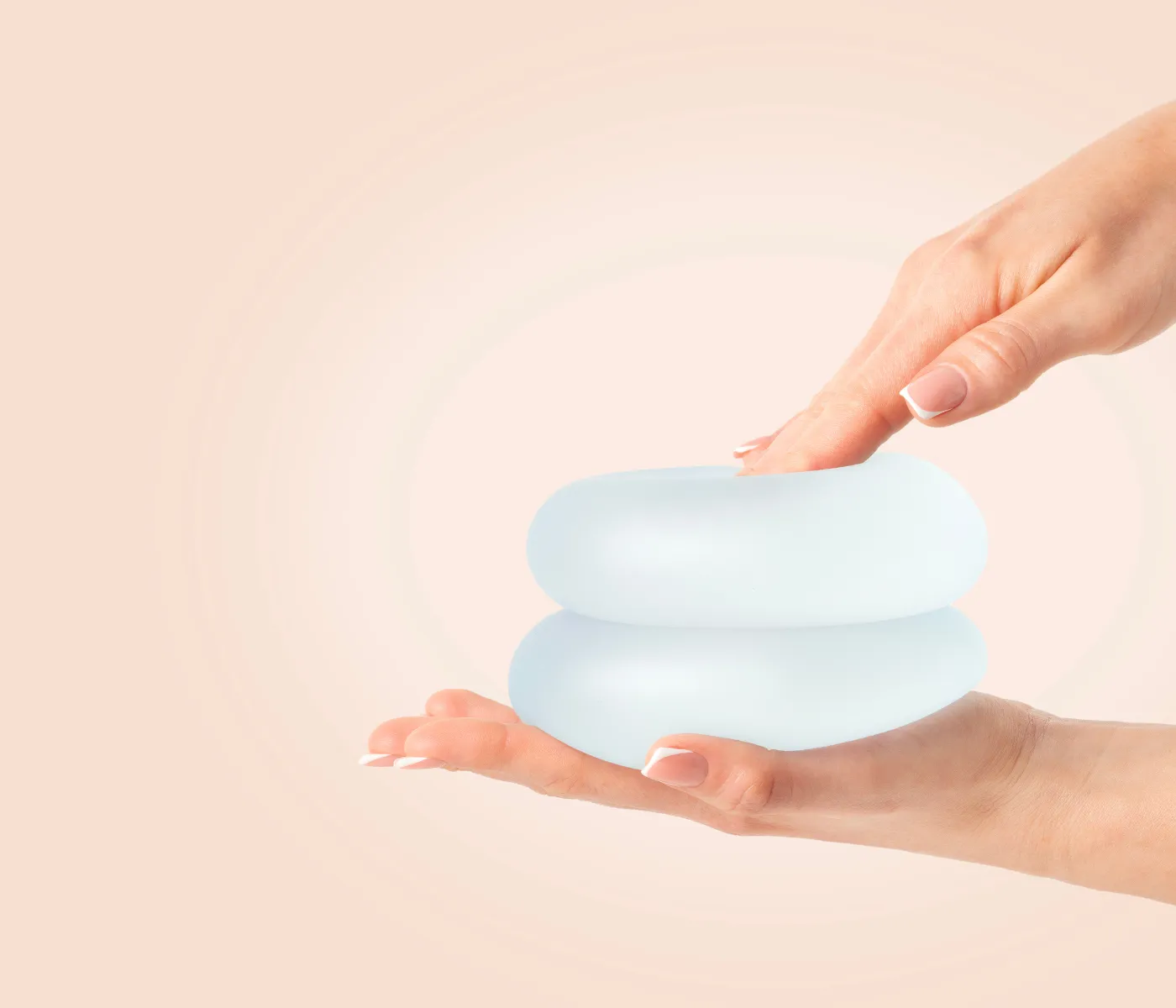Breast Implant Weight FAQs: How Much Do Different Implants Weigh and What Does It Depend On?
By Partington Plastic Surgery on April 21, 2024 in Uncategorized

Among the most often performed cosmetic operations globally, breast implants help people improve their appearance and confidence. Although size and shape dominate the decision-making process, the question, “How much do breast implants weigh?” is equally significant. Ensuring wise decisions that balance appearance with physical well-being depends mostly on an awareness of implant weight.
Why Does Breast Implant Weight Matter?
The body directly changes depending on the weight of the breast implants. Heavy implants can compromise posture, comfort, and running or swimming. This explains why it’s important:
- Posture and Comfort: Weight on the chest might strain the spine or shoulders, especially for petite people or those with back problems.
- Lifestyle Impact: Heavier implants could feel less comfortable for people who lead active lives during exercise or lengthy physical activity.
- Aesthetic and Longevity Considerations: Larger implants may strain breast tissue and alter their appearance.
When choosing implants, asking your surgeon “How much do my breast implants weigh? “, is just as important as clarifying size or shape to ensure a balanced choice that maximizes both physical comfort and aesthetic goals.
Factors That Determine Breast Implant Weight
Implant weight depends on many factors. Knowing these components can help you choose the size and kind of implant best for your situation.
Type of Implant
The implant kind greatly affects its weight. Silicone implants, filled with gel, are heavier than saline implants, packed with sterile saltwater. Silicone implants appear and feel natural, but their weight may strain breast tissue. Despite being lighter, saline implants may not look as well as silicone ones. When choosing between the two, consider appearance and comfort.
Size of the Implant
The weight of the implant determines exactly its size. Due to additional silicone or saline filler inside the shell, larger implants weigh more. Patients should be aware that larger implants could cause more physical strain on the skin and surrounding tissues, therefore influencing long-term results. To avoid discomfort and difficulties, visit a surgeon to ensure the size matches the individual’s body proportions and frame.
Implant Shell Thickness
The answer to the question “How much do breast implants weigh?” also depends on its outside shell. Though heavier, implants with thicker shells are more durable and less likely to burst. On the other hand, thinner shells might weigh less but over time could lose some durability. Making an informed selection requires discussing shell thickness pros and negative aspects with a specialist.
Fill Volume
The degree of saline solution filling in a saline implant will affect its weight. While underfilled implants could feel softer yet possibly show more clearly under the skin, overfilled implants may weigh heavier but also give a firm feel. Perfect weight distribution, appearance, and tactile comfort are made possible by striking the ideal balance in fill capacity.
Patient’s Frame and Tissue Characteristics
Furthermore, influencing the interaction between the weight of the implant and the body is the patient’s natural breast tissue and body frame. For people with smaller frames or thinner skin, even tiny implant weight changes can cause discomfort or sagging. Selecting a weight that fits the patient’s unique body depends on the knowledge of a surgeon on individual anatomy.
Making an informed breast implant decision requires understanding these aspects. Patients can get results that fit their aesthetic tastes and long-term physical well-being by closely evaluating how each of these components adds to implant volume.
How Much Do Silicone Breast Implants Weigh? Average Weights of Common Implants
Below is an overview of breast implant weights by size and material to help you understand:
| Size (cc) | Silicone Implant Weight | Saline Implant Weight |
|---|---|---|
| 250cc | ~0.53 lbs (240g) | ~0.50 lbs (227g) |
| 300cc | ~0.63 lbs (286g) | ~0.56 lbs (255g) |
| 400cc | ~0.84 lbs (381g) | ~0.74 lbs (336g) |
It’s vital to remember that 1 kilogram equals 1,000 grams when calculating how much do breast implants weigh in kg. For better knowledge, the previously indicated weights from pounds to kg are converted below:
| Size (cc) | Silicone Implant Weight (kg) | Saline Implant Weight (kg) |
|---|---|---|
| 250cc | ~0.24 kg | ~0.23 kg |
| 300cc | ~0.29 kg | ~0.26 kg |
| 400cc | ~0.38 kg | ~0.34 kg |
These calculations estimate breast implant weight in kilos, making it easier to compare solutions for your preferences or needs.
The Impact of Breast Implant Weight on Your Body
Understanding how breast implant weight affects your body is crucial for those considering breast implant surgery. Whether silicone or saline, extra weight from breast implants can affect posture, muscular stress, and general comfort over time.
Posture and Spine Health
Breast implants change your center of gravity because they increase weight. This change could induce your body to compensate by adjusting its normal posture, so straying the back, shoulders, and neck and maybe cause strain. The weight of larger implants might worsen these concerns and cause persistent discomfort if not supported or exercised. See a healthcare provider to reduce your chance of posture-related issues.
Muscular and Skeletal Effects
Implant weight may also damage chest and shoulder muscles and soft tissues. Particularly in the pectoral and shoulder areas, which help to support the extra heft, heavier implants may cause muscular tiredness or strain. Over time, this may cause mild to moderate discomfort, especially during exercise or hard activity.
Physical Activity and Mobility
Affecting physical activity is the weight of breast implants, particularly for those leading very busy lives. Running and strenuous activities may feel different or require more chest support. Selecting the appropriate kind of sports bra or extra support device helps to reduce possible discomfort and shield the chest tissue from pressure connected to implant weight.
Long-Term Considerations
Long-term effects of implant weight, such as breast tissue weakening or form alterations, must be considered. Because the extra weight strains underlying tissue and skin elasticity, heavier implants can raise the risk of sagging. Regular surgeon visits and self-care can reduce these symptoms.
The effect of breast implant weight ultimately differs between individuals and relies on elements including implant size, body frame, and general physical condition. Talking to your surgeon about long-term comfort and practicality will help you choose the best option for your objectives and lifestyle.
Tips for Choosing the Right Breast Implant
To guarantee a natural and balanced look, think about your body frame and proportions.
- Discuss your lifestyle, including physical activities and sports, with your surgeon to choose the right implant size and type.
- Investigate several kinds of implants — such as saline and silicone implants — and then learn the benefits and downsides of each.
- Consider placement alternatives such as over or under the muscle, which can affect appearance and feel.
- Consider your long-term objectives including possible future developments including weight fluctuations or pregnancy.
- Talk to your surgeon about your goals and aesthetics to get the best outcomes.
- Give safety and quality top priority by selecting a board-certified plastic surgeon with a lot of breast augmentation experience.
Conclusion: How Much Do Breast Implants Weigh, and Why Is It Important?
Weight is crucial for maximum results and long-term comfort with breast implants. An implant’s weight can greatly affect not just the appearance but also your body’s reaction, including elements of posture and physical activity. You can make a better option that meets your body’s demands and goals by carefully evaluating implant size, material (silicone vs. saline), and lifestyle effects.
Additionally, consider how implant weight may interact with your natural tissue and frame since bigger implants can occasionally cause back pain or sagging over time. A certified plastic surgeon must be consulted for this decision. A professional can offer individualized advice, guiding you to balance the benefits and downsides of several choices so that your implant decision not only fits your visual preferences but also your long-term physical condition. Investing the time to thoroughly assess your alternatives will help you to be sure you are choosing the correct one for you.
Return to Overview